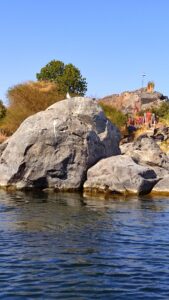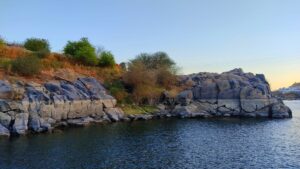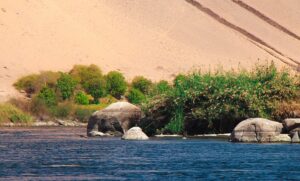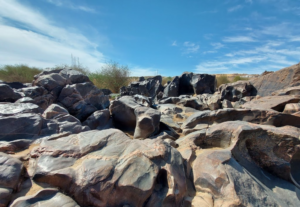Saluga and Gazelle islands are located in the River Nile. They are the smallest in Egypt, together covering half a kilometre only.
Nonetheless, the islands are an outstanding nature reserve in the southern part of this country, specifically in the southern city of Aswan.
The islands contain a waterfall that is located around 3 kilometres north of the Aswan reservoir.
As a name, ‘Saluga’ derives from how the Nubians identify the word ‘waterfall’. ‘Gazelle’ as a name also derives from the presence of a large number of deer species in the region a long time ago.
At present, no deer can be found on the island. To the south of the two islands, there is an area that was declared a Biosphere Reserve in 1993 by the Biosphere Programme of UNESCO. The area is classified as a wetland reserve.

A variety of living organisms can be found in Saluga and Gazelle islands, including animal and plant kingdoms, despite the reserve’s small size. The reserve is also located in the middle of the Nile. It boasts a large number of animals, such as camels, goats, wild donkey, hyenas and red fox. These animals do not necessarily live on the island. However, most of them can be found on the West Bank of the Nile. They swim across the river to build a burrow on the islands of the reserve.
The reserve is also home to 135 species of resident and migratory birds, some of which are endangered.
The most famous of these rare birds are the black ibis, from which the reserve takes its symbol. The same birds also include the white and green shield, falcons, warblers, hoopoe, paradise sparrow, bulbul, and the black and white stork.
In addition to animals and birds, there are also some species of reptiles, such as snakes and scorpions.

The reserve is also characterised by the presence of a large number of invertebrates, most of which live under shrubs, such as ants and beetles, which have an important role in the ecological and biological balance and soil fertility in the area.
As for plant life in the reserve, it is more diverse and clear, as more than 140 different species of plants have been registered in the area.
Some of these plants are specific to the Nile islands and do not grow outside of them. The most famous trees of the reserve are Acacia, of which there are five species.
The presence of such a large number of acacia in one place is a rare occurrence. Suffice it to know that there are only 13 species of acacia throughout Egypt.

The islands of the reserve enjoy a special nature. The islands’ nature and topography vary from one area to another. This gives them a unique biological diversity, despite their small area.
The southern areas of the islands are dominated by granite rock character interspersed with some plants. They are a suitable environment for the living of certain species of snakes.
The central areas of the islands are called ‘meadow areas’, which are areas of silt layers that formed over decades. They are interspersed with some areas of small rocky areas. This area is characterised by a high density of acacia trees.
The northern areas of the islands are easy and flat. They are covered with sand. These areas are covered by water during Nile flooding.

The reserve does a wonderful job protecting wild and floral life in it. It is a suitable destination for nature reserve tourism, taking advantage of the natural resources available in the area.
A visit to the islands cannot be complete without a visit to Aswan itself, a city that is full of interesting sites. Aswan is also home to a large number of tourist facilities that suit all types of budgets.







Discussion about this post